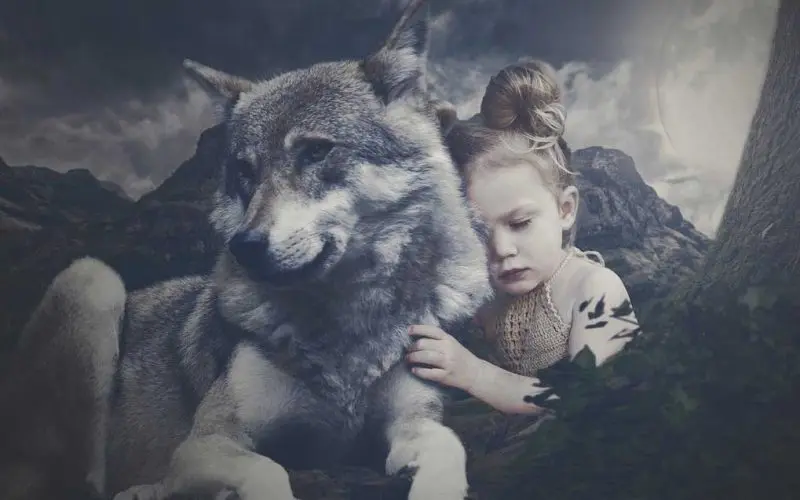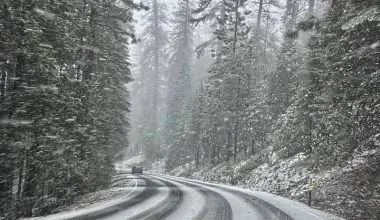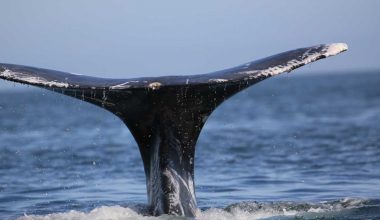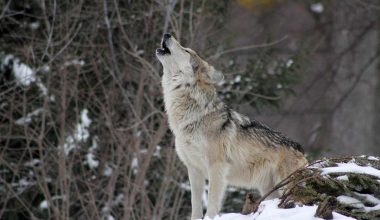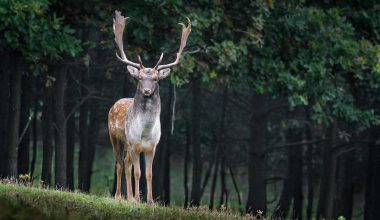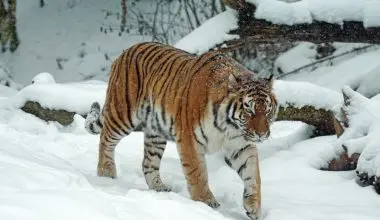Table of Contents Show
Endangered species are found throughout the world. Endangered species are those species that are at a high risk of becoming extinct if actions aren’t taken to preserve their population, as well as their habitats.
Humans can be considered as the biggest reason for species endangerment. These include poaching/hunting, illegal trafficking, and habitat destruction.
We certainly have to play our part to protect these species from becoming extinct in the ecosystems. It is our responsibility as inhabitants of the planet to protect the species on this earth.
We can do a number of things that will bring a positive impact on wildlife and prevent endangerment.
20 Solutions to Wildlife Endangerment
Navigation
We have made a list of 20 solutions that you or your friends and family can do to help endangered species.
- Volunteer
- Learn about Species Endangerment
- Animal-proof your homes
- Stop Using Toxic Chemicals
- Grow Native Plants
- Drive Carefully
- Recycle and Buy Recycled
- Do Not Buy Plastic
- Don’t Buy Products made from Hunting Animals
- Boycott Polluting Companies
- Support National Parks and Zoos
- Using Social Media to Protect Species
- Donate
- Reduce Pollution
- Reduce Water Consumption
- Join Conservation Organizations
- Read more on the Subject
- Comsume less
- Reduce Electricity Consumption
- Spread the Word!
1. Become a Volunteer
Wildlife parts, refugees, and other places are often the hub of saving countless species. You can help by becoming a volunteer at one of these places to help protect these animals.
Every single person becoming a volunteer can make a difference.
Various organizations such as WWF, ENDANGERED, and NRDC are working to protect these creatures and preserve their habitats to protect them from extinction.
Their mission is to find ways and create awareness to save these marvelous species from being wiped off the planet.
I use volunteermatch.org to find volunteering programs wherever I am. All you have to do is put in your location.
2. Know Species facing endangerment
Before you choose to become a volunteer, you need to be aware of species endangered in your area and must inform others about it as well.
If you have proper knowledge about endangered species by carrying out proper research, you can let everyone know about those animals and why they’re endangered.
I’ve also put together a list of known species close to endangerment.
3. Animal-Proof Your Home
It’s like baby-proofing, but for our beloved animals.
Ensure your home isn’t causing damage to animals or their habitats.
Try to secure all the trash so that animals can’t get to it. Use lids that lock on your trash bins to keep your trash from becoming a source of hazard for these animals.
2 years ago, a bird landed on my open trash can in the garden. While scavenging for food, the crow got a piece of plastic on it’s neck. Before I could get near to it, the bird got scared and flew away (with the plastic).
Oh, the agony! I still feel guilty.
Place decals on windows to prevent birds from colliding with the windows. As many as 988 Million birds die flying into windows. Decals will help to protect these birds from collisions.
You should also try reducing the amount of water you use, so there is more available for wildlife living around your house.
4. Stop using toxic chemicals
Most people try to go the extra mile to make their gardens and lawns look as esthetically pleasing as they can.
However, you should know that most herbicides, pesticides and agricultural chemicals are horrible pollutants.
They can end up causing serious damage to the environment.
Gardeners and lawn enthusiasts need to make use of alternative farming methods to make their garden more beautiful without harming local wildlife.
5. Grow Native plants
Animals that live in a specific area, only consume plants that are native to the region. Try to plant flora that is native to your area. Here’s a native plant finder that will help you out.
This will help provide a source of food to these animals.
Alternatively, you could also go out on a walk and plant some trees. Trees are a terrific source of food and shelter to wildlife.
6. Drive carefully
If you live or commute in rural areas, and even highways; roads can be the biggest hazards faced by animals.
If driving on road, allow the animals to cross and drive at a certain speed limit with constant attention being paid to the front of the road.
Every year more than 253,000 animals are hit by cars! These are only the ones counted as a result of
Mobile phones must be avoided as they tend to be a source of distraction while driving.
7. Start recycling and buy recycled products
By adopting an approach which involves recycling and purchasing eco-friendly products can help go a long way to help our animals.
Try not to purchase anything forest products made from unsustainable practices. They may be promoting deforestation of various rain-forests around the world. That’s a major cause of habitat loss.
You should be aware of the products you buy. Sometimes they may be causing great harm to habitats of endangered species. Try to know about the environmental impact of company before buying that product.
8. Don’t buy plastic
Limiting the use of plastic and trying to recycle it can go a long way to protect animals.
Animals mistakenly consume plastic as food, or it may get tangled or wrapped around their face making it difficult for them to breathe.
This may lead to death of these animals if the plastic is not properly disposed of.
You are also advised to use biodegradable or compostable plastic bags as opposed to conventional plastic bags commonly used.
9. Don’t purchase products sourced from endangered animals
In most countries, such as the United States, you don’t need to worry about this due to excellent regulations by EPA.
But if you travel abroad, you might come across various illegal products in the market that come from poaching endangered species.
Try your best not to participate in this trade. Beware of products being made from endangered species to identify them in markets abroad.
10. Boycott companies that Pollute
Many industries around the world are known to pollute natural resources of our planet.
They usually cover it with vague ‘false’ phrases like ‘green’ or ’sustainable’ when the truth Is completely different. This is known as ‘green-washing‘.
Show them you’re not fooled by ignoring these companies and their products and condemning their actions.
Even better, shoot them an email to tell them how they can make it better. Everyone deserves a chance.
Do business with those companies that are truly Eco-friendly and recognize importance of the environment we live in.
11. Visit wildlife parks and zoos
Zoos and wildlife parks are a way of teaching humans about various animals and how to protect them and their environment.
By learning about these, people get to know how valuable these species are to our planet.
Next time you plan a trip, take your kids to the nearest National park you find! Then they can go to Disneyland if they really want to.
I always use this book a week before my trip to know more about the National Park i’m going to visit.
12. Get active
Activate the Environmentalist in you!
Join various groups and spread the message of protecting endangered species to various people in your community.
You can easily do this through the power of social media.
First step: Share this post!
P.S: Protest and boycott companies that profit off ecosystems and animals at risk of endangerment.
13. Donate
Be a part of various organizations working effortlessly to preserve endangered animals by donating to these organizations.
These donations don’t need to be massive. Donate only as much as your wallet allows you to.
One of the best ones you can find out there is WWF.
14. Reduce pollution
Pollution is a major cause of widespread habitat destruction and mass migration of animals.
Pollution can be of many types. It could be in any form; air, water or land pollution.
You can learn about all of these types by surfing through out blog. Stay limited to 1 post-per-day, we’ve been know to be too attractive.
Anyways,
Do your part by finding sources of pollution in your area and finding solutions on Environmentbuddy. You should also promote awareness about pollution.
15. Reduce Water Consumption
Many countries are experience droughts, due to their climate, whereas many countries are consuming way too much water without the knowledge of consequences it may have on animals.
Limit the usage of water where it seems possible to allow more water to be available for animals.
16. Be a part of Wildlife Conservation Organization
Currently, many different organizations around the world are working to protect and conserve endangered species as well as their habitats.
You may choose to join one that suits your interests and be a part of their efforts to change the world.
Furthermore, you can also become a conservationist!
17. Read on the subject
There are many books dedicated to the topic of endangered species and how we can protect these endangered species.
You should definitely read this book to learn more about those species. This will help you know more about what species are endangered today and how you can help protect them.
18. Consume less
The more you go on to consume, the more energy you are using. This results in further deforestation, carbon emissions and greenhouse gasses.
By choosing to consume less, you will be saving time, money and energy.
Moreover, you will also be reducing the amount of pollution in the environment, eventually doing more to protect wildlife.
19. Reduce Electricity Consumption
Limit your electricity consumption. Higher electricity consumption means more trees cut down to provide energy for power plants.
translates to more pollutants being deposited into the environment by power plants.
20. Spread the word
This is probably one of the thousands of articles available on the internet that is concerned with the protection of endangered species.
Try to share this, as well as various other articles concerned with this amongst your friends, family, relatives, and co-workers to create awareness.
So again I ask you; share it! You’ll find social icons here somewhere.
Conclusion
It doesn’t help that most of the species are very picky when it comes to their diet, habitat selection, and mating partners making conservation programs for these species very difficult.
The Panda is a common example. Most of their diet is based on bamboo and they don’t tend to eat much of anything else. They are also very picky in breeding partners as well, making selective breeding very difficult to carry out for them.
Maybe that’s just nature. Or is it humans only who ensured the endangerment of these animals with their unsustainable hunting practices?
For this reason, new innovations are being employed wherever possible. However, human cooperation is absolutely necessary to make these conservation practices successful.
